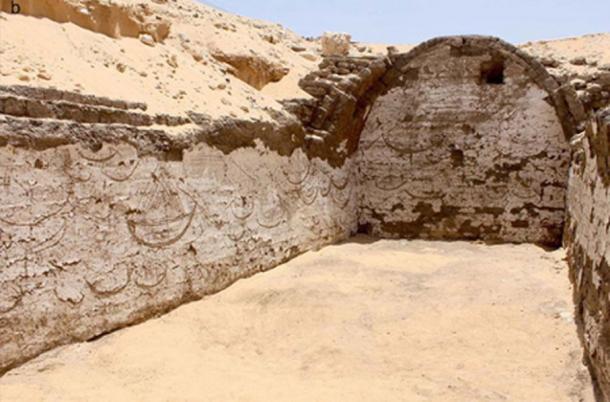
Archaeologists Announce that New Discoveries Solve Mystery of How the Great Pyramid Was Built
A new set of investigations in ancient Egypt have led to some startling discoveries – the translation of an ancient papyrus, the unearthing of an ingenious system of waterworks, and the discovery of a 4,500-year-old ceremonial boat – may be the final pieces to the millennia-old puzzle of how the Great Pyramid of Egypt was really built.
Archaeologists have reported their incredible new findings to Mail Online, which will be reported in full in tonight’s Channel 4 documentary ‘Egypt’s Great Pyramid: The New Evidence’ in the United Kingdom.
Despite centuries of research into the pyramids of Giza, there has still been no definitive explanation as to how the ancient Egyptians cut, transported, and assembled millions of limestone and granite blocks, each weighing an average of 2.3 metric tons. “For the construction of the pyramids, there is no single theory that is 100% proven or checked; They are all theories and hypotheses,” said Hany Helal, Vice President of the Heritage Innovation Preservation institute.

The Great Pyramid of Giza. Credit: BigStockPhoto
How Were the Stone Blocks Transported?
It has long been established that the limestone was quarried in Tura about eight miles away, while the granite used in the interior of the Great Pyramid was quarried 533 miles away in Aswan. However, archaeologists have not been able to determine how the stones were transported to Giza for the construction of the pyramid of Khufu. A study in April, 2014, claimed to have solved part of the puzzle – ancient Egyptians moved massive stone blocks across the desert by wetting the sand in front of a contraption built to pull the heavy objects. But three separate discoveries in the last few years are now painting a different picture.
- Analysis Begins on Cosmic Particles in the Egyptian Bent Pyramid – Will This Help Explain How the Pyramids Were Built?
- Engineer Releases New Theory on How Egypt's Pyramids Were Built
- Unraveling the Mystery of the Great Pyramid Air-Shafts
New Evidence Reveals Blocks Arrived by Boat
The discovery of an ancient papyrus in a cave at the ancient Red Sea port of Wadi el-Jarf, the unearthing of a lost waterway beneath the Giza plateau and the finding of a ceremonial boat, now strongly suggests that thousands of laborers transported 170,000 tons of limestone along the Nile River Nile wooden boats.

An Ancient Egyptian Boat. Credit: Canadian Museum of History
The Diary of a Pyramid Builder
The 4,500-year-old papyrus found at Wadi el-Jarf offers a significant insight into the construction of the pyramids. Written by Merer, an overseer in charge of a large team of elite workers, the ancient logbook from the 27 th year of the reign of the pharaoh Khufu, described in detail the construction of the Great Pyramid.
“The hieroglyphic letters … detailed over the course of several months the construction operations for the Great Pyramid, which was nearing completion, and the work at the limestone quarries at Tura on the opposite bank of the Nile River,” reports History.com. “Merer’s logbook, written in a two-column daily timetable, reports on the daily lives of the construction workers and notes that the limestone blocks exhumed at Tura, which were used to cover the pyramid’s exterior, were transported by boat along the Nile River and a system of canals to the construction site, a journey that took between two and three days.”
Remnants of an Ancient System of Canals
If this account is accurate, where are the canals that Merer speaks of? Until recently, there was little evidence of such a system of waterworks that could have been used to transport the giant blocks. However, archaeologist Mark Lehner has now revealed the discovery of a lost waterway beneath the Giza plateau. “We’ve outlined the central canal basin which we think was the primary delivery area to the foot of the Giza Plateau,” he told Mail Online.
Transport Vessels Found
Seven boat pits have been found in the area around Khufu’s pyramid, two on the south side, two on the east side, two in between the queens’ pyramids and one located beside the mortuary temple and causeway. In addition, archaeologists have found ceremonial boats, which reveal in detail how the ships were constructed, and detailed relief carvings of hundreds of transport vessels.

3,800-year-old relief carving in Egypt depicts over 100 boats. Credit: Josef Wegner.
The details of these new discoveries are being broadcast for the first time in ‘Egypt’s Great Pyramid: The New Evidence’ being aired tonight on Channel 4 at 8pm BST.
Top image: Great Pyramid of Egypt. Source: BigStockPhoto
















Comments
Channel 4 tells me nothing. The station's call letters are what is needed. Every TV service provider has different channel numbers.
This article reminds me the adeventure of Asterix and Obelix , which date 50 years ago !
That means that there is nothing new under Sun and the mistery of the construction is far to be solved !
Cool. Good to hear! :)
R. Lee Bowers
No hard feelings at all. And btw, my comment was about block size, not the photo! :)
Hi Neil,
Well said! I am sorry if I ruffled your feathers a bit, but the tone of your post was similar to many posts by internet trolls, who only appear when there is an opportunity to stir up problems, and cause general chaos on a good site.
Apparently, you are not one of those, and your comment was indeed, intelligent and to the point. I did not intend to be condescending, and I am sorry if I appeared that way to you, but I believe that you can see my point as well.
No hard feelings?
R. Lee Bowers
Pages